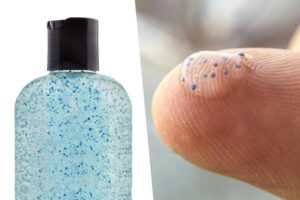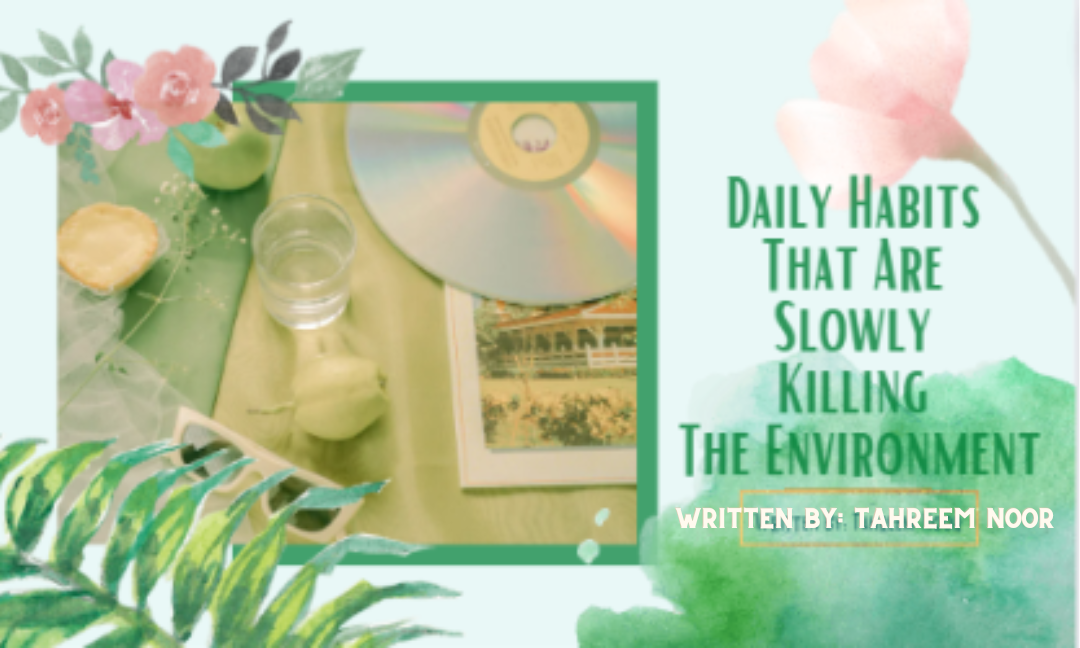Daily Habits That Are Slowly Killing The Environment
Written By: Tahreem Noor
Edited By: Colleen H
Designed By: Advita G
Published By: Sam P
Accordingly to popular belief, a human being can form a habit in as little as three weeks. One major concern about daily human habits is how they are gradually destroying the environment. Surprisingly, the majority of it is due to ignorance. While some may appear innocuous at first glance, further investigation reveals how harmful some can be to the environment.
Every one of our habits, from driving to washing our face to wasting food, has an impact on the environment in some way. Small changes in our daily lives are all that is required to reduce our carbon footprint in the environment.

Driving is one of the most common ways people prefer to get around in their daily lives. However, with as many as 26.2 million motor vehicles in Canada alone, the environment pays the price in the form of gasoline fumes produced by cars.
With so many people owning cars in other parts of the world, the environmental impact is massive. People should carpool or be more willing to use public transportation in order to reduce their carbon footprint.

The majority of items sold in stores are packaged in plastic containers. Furthermore, the majority of carrying bags available at the cashier’s register are made of plastic. According to statistics, food packaging accounts for nearly 70% of all household trash and waste that ends up in landfills.
The issue is that plastics are a major polluter of the environment due to their inability to degrade naturally and their millennia-long life cycle. This means that as more plastics are dumped in landfills, decomposition does not occur, thereby adding no value to the earth.
Many people believe that not completely emptying a plate during a meal is a formal decency. However, throwing food is bad in the context that it is a basic essential that less fortunate people do not have access to. Food waste is even more harmful to the environment because forests are cut down and emissions are produced during the agriculture, transportation, and processing processes.
Furthermore, if waste food is not dealt with effectively, it can lead to an increase in organic matter in waterways and other aquatic environments. This can promote the growth of algal blooms.
People use face washes that mostly contain plastic exfoliating microbeads, which researchers consider to be a serious environmental problem. Since they have a small size, the beads are not filtered during sewage treatment.

When released into bodies of water, they are consumed by fish and other marine animals, endangering their health and potentially poisoning or damaging their gills.
Since the beads are made for scrubbing during human use, they also destroy the animal’s internal systems. The abrasive nature of the bead is harmful to aquatic animals.
Methane is one of the most common greenhouse gasses in the world. This gas retains heat in the atmosphere. According to research, farmed livestock is the largest producer of methane gas. In this sense, the production of animal products contributes significantly to methane.
By continuing to demand meat products, farmers increase the supply of the goods by keeping more animals, resulting in more greenhouse gas emissions. This cycle exacerbates environmental issues. Alternative protein sources should be pursued in order to provide food for people while avoiding the environmental costs associated with farmed food.
Consumerism is defined as the continuous and excessive purchase of consumer goods. It occurs after basic needs are met, allowing individuals to purchase items for leisure or other purposes. This practice raises the demand for consumer goods, causing the market to produce more by continuously running production factories. As a result, there is constant energy consumption, which has an impact on the environment because it involves the burning of fossil fuels and the subsequent production of greenhouse gasses.
Humans use paper in a variety of ways on a daily basis. Paper towels in the kitchen, tissues in the toilet, and print media for our daily reads are all examples. Regardless of how we use paper on a daily basis, we often forget that it is made from trees.
We are constantly cutting down trees to meet market demands because of the steady increase in demand caused by our lifestyle and the altered definition of hygiene. As a result, the number of trees cut down each year has increased, contributing to deforestation.

To avoid habitual spending, we should reduce the number of goods we buy in order to reduce demand, and thus supply and production of those goods. In the end, it will reduce manufacturing production and help the environment.
The final environmentally destructive habit is not recycling. We send too many resources to landfills by not recycling, such as plastics and glass. Recycling saves energy and resources by reusing previously manufactured goods.
This means that the energy that would have been used to create entirely new goods can be repurposed or conserved.
Sources:
- https://www.conserve-energy-future.com/daily-habits-human-beings-that-killing-environment.php
- https://www.nrcan.gc.ca/energy/efficiency/communities-infrastructure/transportation/cars-light-trucks/idling/4415
- https://www.conserve-energy-future.com/causes-effects-solutions-of-plastic-pollution.php
- https://www.bbc.com/future/bespoke/follow-the-food/the-wasteful-fate-of-a-third-of-food/
- http://rmpbs.lunchbox.pbs.org/blogs/news/a-watched-pot-what-is-the-most-energy-efficient-way-to-boil-water/
- https://www.healthline.com/nutrition/meat-good-or-bad
- https://sciencing.com/human-activities-affect-ecosystem-9189.html
- shorturl.at/gltX0
- https://www.irishevs.com/pollution-rises-driving-open-windows
- https://www.irishevs.com/pollution-rises-driving-open-windows
- https://www.irishevs.com/pollution-rises-driving-open-windows

